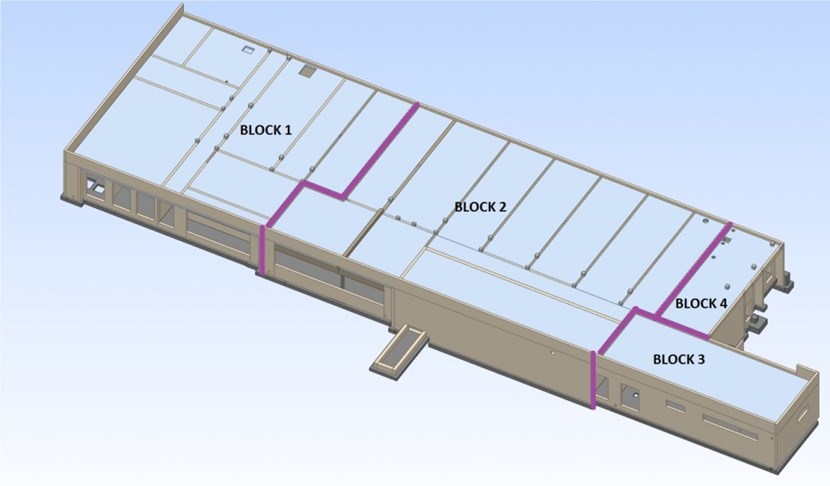
In the lower left corner of the image, a bridge leads from Headquarters to the non-nuclear Control Building, where scientists, engineers and operators will follow every pulse. A smaller building will be erected at a later date according to nuclear standards as an emergency fallback.
"If the tokamak is the heart of the ITER worksite, then the control building is the brain," says Paul Stewart, a civil engineer in the Building & Civil Works Section. Inside of the main Control Building, which is a non-nuclear structure directly accessible from ITER Headquarters, experts will operate the machine from the control room, and a server room will store data for future reference. But the control building will also serve as a primary workspace for these experts, and this is where the non-nuclear distinction becomes necessary.

The building superstructure is made of four independent concrete blocks, separated by structural joints, and a network of steel reinforcement. It should be completed by summer 2022.
The principal contractor and supplier for this project is Demathieu Bard Construction (DBC), through a contract with the European Domestic Agency, Fusion for Energy. As part of this contract, DBC will also work on the buildings housing the 







